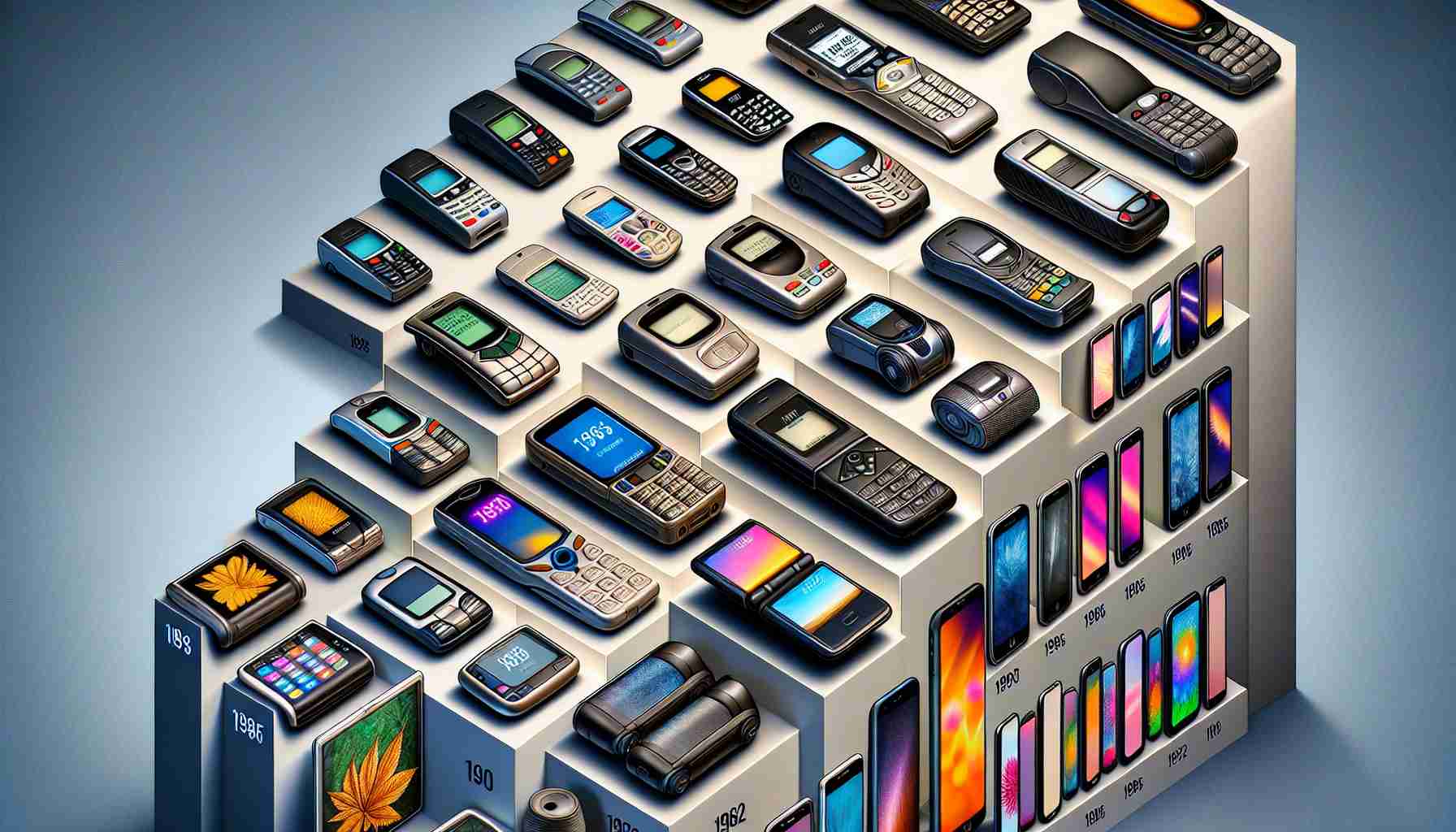The landscape of mobile phones has transformed significantly over the past two decades. From the introduction of smartphones to the evolution of design and features, the industry has witnessed remarkable changes.
2003
The launch of the Nokia 6600 in June 2003 marked a significant milestone in the era of smartphones. With features like a VGA camera, music and video player, Bluetooth, and a 2.1” display, it set the standard for mobile technology at the time. Notable mentions from the same year include the Sony Ericsson P900 and Samsung C100.
2004
The Motorola Razr V3 revolutionized the market with its sleek aluminum body and futuristic appeal. Initially positioned as a premium model, it went on to become one of the best-selling phones of all time, reaching over 130 million units sold. Other notable devices from 2004 include the Siemens C65 and Sony Ericsson K700.
2005
The Sony Ericsson K750 introduced advanced multimedia capabilities, including a 2MP camera with autofocus – a significant upgrade from its predecessors. With features like a FastPort interface, the device garnered sales of 15 million units. Accompanying devices from 2005 include the Nokia 8800 and Sony Ericsson P990.
2006
The Nokia N95, part of the N-series, made waves with its dual-slide mechanism, 5MP camera, and integrated GPS. It was one of the early models to support HSDPA networks, surpassing sales of 10 million units. Other devices from 2006 include the Samsung D900 and Sony Ericsson K800.
2007
The introduction of the first iPhone in 2007 revolutionized the smartphone industry with its touch interface. Despite limited functionalities initially, it sold over 6 million units. Devices like the Sony Ericsson P1 and Nokia N82 also made their mark in the same year.
2008
The HTC Dream T-Mobile G1 became the first smartphone to feature the Android operating system in 2008. While well received, Android required several updates to enhance its capabilities. Other notable devices from 2008 include the Nokia N97 and Sony Ericsson Xperia X1.
2009
Sony Ericsson Xperia X10 was the company’s first venture into Android, boasting a 4” display and an 8MP camera. Accompanied by mini variants, the X10 series expanded the Android lineup. Devices like the Samsung I7500 Galaxy and Nokia N900 also made their debut in 2009.
2010
The Samsung Galaxy S kickstarted the renowned Galaxy series, featuring a Super AMOLED display, a slim profile, and advanced graphics capabilities. With sales exceeding 25 million units, it set a new standard in mobile technology. Other devices from 2010 include the Nokia N8 and Apple iPhone 4.
2011
Nokia Lumia 800 stood out as the company’s first Windows Phone device, sharing design elements with the N9 model. Boasting features like a 3.7” display and an 8MP Carl Zeiss camera, it showcased Nokia’s commitment to innovation. Devices like the Sony Ericsson Xperia PLAY and Samsung Galaxy Note also made waves.
2012
The Nokia 808 PureView introduced groundbreaking camera technology with a 41MP sensor and PureView imaging capabilities. With exceptional imaging performance, the device set a new benchmark in smartphone photography. Other devices from 2012 include the Xiaomi Mi 2 and HTC One X.
2013
The LG G2 captivated users with its compact design and impressive 13MP camera. With minimal bezels and a powerful display, it showcased LG’s prowess in mobile innovation. Other devices like the BlackBerry Bold 9000 and LG Nexus 4 also made their presence felt in 2013.
The evolution of mobile phones over the years is a testament to the rapid advancements in technology and consumer preferences. Each device mentioned has contributed uniquely to the ever-evolving landscape of mobile communication.
Unveiling More Intriguing Facts in the Evolution of Mobile Phones
The technological journey of mobile phones has a rich tapestry of developments beyond the familiar mentions in the previous article. Delve deeper into the mobile phone timeline to uncover lesser-known but significant milestones that have shaped the industry.
What are the Key Advancements Beyond the Mainstream Devices?
While iconic phones like the Nokia 6600 and iPhone captivated the market, other noteworthy devices added distinctive features to the mobile landscape. For instance, the HTC Evo 4G, released in 2010, was one of the first smartphones to support 4G connectivity, heralding a new era of high-speed mobile internet. Similarly, the BlackBerry Curve 8520, launched in 2009, gained popularity for its dedicated multimedia keys and trackpad, catering to productivity-focused users.
What Challenges Emerged Alongside Technological Progress?
As mobile phones evolved, challenges surfaced regarding data security and privacy. The rise of smartphones brought concerns about personal information being vulnerable to cyber threats. Moreover, the fragmentation of operating systems, with iOS, Android, and Windows competing for dominance, posed interoperability challenges for developers and users alike.
Exploring the Advantages and Disadvantages of Mobile phone Evolution
The evolution of mobile phones has brought about unparalleled convenience, enabling seamless communication, entertainment, and productivity. Advanced features like high-resolution cameras, augmented reality, and biometric authentication have enhanced user experiences. On the flip side, the rapid pace of technological obsolescence has made older devices quickly outdated, leading to e-waste accumulation and environmental concerns. Additionally, the dependency on smartphones for various tasks has raised issues of screen addiction and social disconnect.
Additional Insights from the Mobile Phone Evolution Timeline
Beyond the surface, exploring less-known devices sheds light on the diverse innovations that have shaped the industry. The Jitterbug Phone, designed with seniors in mind, introduced simplified interfaces and emergency response features. On the other hand, the Vertu Signature Touch catered to luxury enthusiasts with premium materials and exclusive concierge services.
GSMA – The GSMA website offers comprehensive insights into the mobile industry’s latest trends and developments, providing a deeper understanding of the evolution of mobile phones.
The evolution of mobile phones is a continuous narrative of technological breakthroughs and societal impacts, underscoring the dynamic nature of communication devices in shaping the modern world. Each device mentioned, along with countless others, contributes to the mosaic of mobile phone history, highlighting the relentless pursuit of innovation and connectivity.
